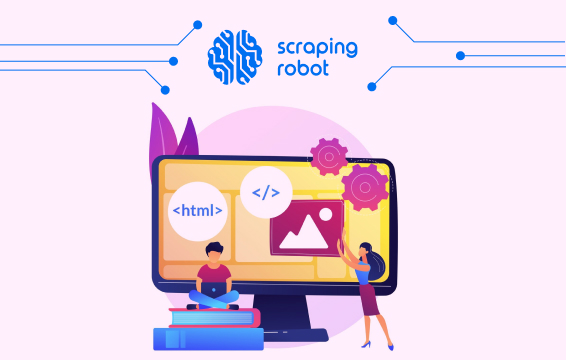4 Examples of Data Analytics Tools (And Data Analysis API)

In college, one of my professors often reminded us of the 1-10-100 model of business. It means that preventing a horrible business decision will cost you one dollar, to correct that wrong decision will cost you ten dollars, and if you don’t fix your failure, it could end up costing your business one hundred dollars. This has turned me into someone who triple-checks everything (and I mean everything. I’m sure it drives my advisors crazy). But, I always think back to my old college professor so I can avoid causing anyone the burden of dealing with the consequences of unadvised decisions. The same can be said for flawed analysis.
With more data flowing around your business organization than ever, it’s crucial to not only work to analyze data but also find tools that help speed up the efficiency and accuracy of your data so you can make decisions that don’t cost your business. There are many types of data analytics tools but they all have one thing in common; they need a reliable source of quality data to function efficiently. That means you need to find a data collection solution that can help you get quality data in large volumes and in real-time. That solution is using a web scraping API. Let’s explore the different types of analytics and how you can use a web scraping API to make your life and business easier.
Table of Contents
1. What Are Data Analytics Tools?
2. Examples of Data Analysis Tools
3. Integrating a web scraping API into your data analyst tools
4. The Best API for Data Analytics
What Are Data Analytics Tools?

The Office of Research Integrity defines data analysis as “the process of systematically applying statistical and/or logical techniques to describe and illustrate, condense and recap, and evaluate data.”
The data that businesses receive for different types of analytics often comes in unstructured, raw forms that need to be further reviewed and transformed for human analysis. But reducing the noise of unstructured data makes way for many vital types of analysis that businesses can use to make crucial decisions. If these decisions are poorly informed or fueled by insufficient data, significant consequences can come and they can be costly.
So, what is a good data analyst tool? These are tools that automatically do the work of transforming the raw data to structured data for analysis. Structured data refers to organized data, like data categorized into a spreadsheet.
Examples of Data Analysis Tools
Descriptive data analytics tools
Descriptive analysis is one of the most basic forms of analysis. After the raw data is processed, these analytics describe past events, no matter how short or long ago they occurred. This is useful because businesses may take this type of data to learn from past decisions and help inform future ones. Typically, this forms the basis for most quantitative and visual data analysis. Examples of descriptive analytics include data analysis on a business’s consumer base, production details, financial records, sales, etc. It is the baseline for all further data analysis and is merely the ‘back cover of the book’ summary of your organization.
Predictive data analytics tools
Predictive analysis does exactly what its name suggests, predicts what may happen in the future. While the future is never fully predictable, you may anticipate the likelihood of several different future outcomes. This allows companies to weigh risk when making decisions and essentially takes these probabilities on their odds. Examples of predictive analysis could be forecasting supply trends to make decisions on what kind of supplies and where they’re sourced from used to develop products or predict your sales revenue in the coming years.
Diagnostic analytics tools
Diagnostic analysis is often coined as the most abstract phase of analysis. It gives insight into why certain events are happening, such as a stock dropping dramatically, or why certain areas of production were in such short supply or high demand. Diagnostic analysis also includes recognizing correlations between events and identifying if they have a positive, negative, or zero correlation. Positive correlation occurs when both variables increase together. A negative correlation happens when one variable goes up, and the other goes down. Zero correlation means that neither variables are related to one another, and the variables are not affected by one another.
For example, if your online sales have gone down in the last month but you have executed successful marketing and advertising campaigns, you would want to know why this is happening. In this case, many things could be wrong, such as a website form that is too long or not viewable on mobile devices or not supporting a popular payment method. By completing a diagnostic analysis, you would find the problem and move forward to fix the issue.
Prescriptive data analysis tools
The use of prescriptive analysis has recently grown in popularity in organizations of all sizes. The prescriptive analysis involves taking all of the above data analysis methods and offering multiple options for a given business decision. The effects of these decisions and possible outcomes can be predicted and explain why these outcomes will occur. It will comprehensively predict events, explain why these events might happen, and provide options for business decisions based on these events.
Integrating a web scraping API into your data analyst tools

How an API connects software with crucial data
An API is an interface that allows pieces of software to communicate. For example, have you ever tried to log in to an application or website and it tells you to log in using your google account? When you click on the link to log in with your Google account, it takes you to an interface where you select your Google account, maybe enter your password, and then takes you back to the website and logs you in. What you just used is an API. The website in question interacted with Google’s API, extracted the details on your google account and used it to create a profile for you. This is what APIs do.
Now web scraping allows you to collect data from any website on the internet using bots known as “crawlers” or “spiders,” These bots parse through the source code of a given website and extract data according to preset parameters. Essentially a web scraping software allows you to collect data as you want. So using a web scraping API means you can set up communication between the scraping software and your data analytics tools. This allows you to funnel data directly from the web scraper into your analytics tools. The web scraping API collects data from the source, the scraping software, and then delivers it directly into your data analytics tools. This allows you to eliminate the entire headache of collecting data, collating it, structuring it and then entering it into your data analytics tools.
- Using a scraping API for descriptive analysis: Some uses of the data that web scraping can collect could be to scrape competitor product prices and inventories and compare them to your own, thus conducting descriptive analysis and understanding how your business performs. Using a scraping API, you can scrape for updates in prices in real-time. Every time there are price changes, the API sends out a scraping request and returns the updated data into your data analysis tools.
- Using a scraping API for predictive analysis: An example of how to use a scraping API to conduct predictive analysis could be in a situation where your business is running a marketing campaign intending to attract a new target customer group that your competitor currently has. By using a scraping API, you can gain information on your target consumers based on their social media profiles. By scraping these profiles, you can pick out trends and complete predictive analysis to understand and craft a marketing campaign to forecast your success with the new consumer group.
- Using a scraping API for diagnostic analysis: A way to utilize scraping in your diagnostic analysis is to scrape your business reviews to review how people are talking about your business and why. Scraping Robot’s scraping API allows you to do this. It collects data on your organization’s aggregated ratings, reviews, work-life balance score, pay ratings, security ratings, management, culture scores, and written reviews. All you need is to type your company’s name, and the data is collected and organized for you! After this data is collected, you can begin your diagnostic analysis to understand what your organization is doing right or wrong and begin implementing changes to help your business grow and thrive.
- Using a scraping API for prescriptive analysis: With the understanding that prescriptive analysis involves the data gathered from all other types of analysis discussed, the time to shine comes in combining all the previous data scraped. A scraping API allows you to centralize your data collection process and create a stream of data that feeds directly into your data analyst tools. Instead of waiting for different departments of your business to bring in information from different sources, setting up a scraping funnel from scraping software to API to data analysis tools allows you to get all your data at once in the same place.
The Best API for Data Analytics

Scraping Robot’s platform has many benefits for your organization with our user-friendly interface, ability to automatically collecting your data, mistake-free, and for free!
Final Thoughts
 To manage the flood of data coming into your business, you must balance your data collection and data analysis processes to stay afloat. While I apologize for the water puns, the fact remains that using a scraping API offers the most efficient way to create a link between your data collection method and your data analytics tools. Just as I won’t forget, you also shouldn’t forget the 1-10-100 model and the costs of bad data collection can have on your business. With Scraping Robot’s scraping software and API, you can set up the smoothest data collection funnel ever.
To manage the flood of data coming into your business, you must balance your data collection and data analysis processes to stay afloat. While I apologize for the water puns, the fact remains that using a scraping API offers the most efficient way to create a link between your data collection method and your data analytics tools. Just as I won’t forget, you also shouldn’t forget the 1-10-100 model and the costs of bad data collection can have on your business. With Scraping Robot’s scraping software and API, you can set up the smoothest data collection funnel ever.
The information contained within this article, including information posted by official staff, guest-submitted material, message board postings, or other third-party material is presented solely for the purposes of education and furtherance of the knowledge of the reader. All trademarks used in this publication are hereby acknowledged as the property of their respective owners.

